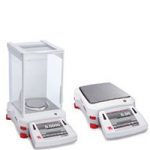Weighing is one of the most basic tasks performed in the laboratory or the warehouse. That is why it is important we do not underestimate certain factors that can influence proper results.
Incorrect usage or unsuitable conditions may cause errors, especially for semi-micro balances, that are used to weigh the lightest samples. OHAUS has been present on the market for over a 100 years and has always been concerned about the universal rules for good weighing as well as developing the perfect tools for that activity.
Be sure to utilize these helpful tips from Ohaus when determining what to do to achieve accurate measurement results with your digital scale or lab balance.
Location — Select the best spot for the balance to minimize environmental effects on results. Direct sunlight is not recommended, nor are air flows (windows, doors, A/C devices or ventilators). Changes in room conditions (temperature or humidity variables) can influence the weighing results. The OHAUS AutoCal™ internal calibration system efficiently protects against these factors. Workplace ergonomics are equally important; therefore, make sure there is enough space around the instrument to provide unobstructed use and sufficient work comfort.
Power — You should always keep the balance plugged in and on stand-by mode when not in use. When the balance is freshly installed, let it warm up for 3-12 hours, depending on the instrument, to adjust to the environment.
Leveling — The slightest variable can affect accuracy, so leveling is crucial. It should be done prior to first use and checked and adjusted periodically. OHAUS Explorer® makes leveling easy
with an up-front leveling bubble and leveling assistant screen.
Reading Stable Results — Remember to make sure the balance shows ZERO before each weighing. Then, the results will be checked only when the balance is stable. A small asterisk (on the left-hand side of the display on Explorer) will confirm that you are getting the correct results.
